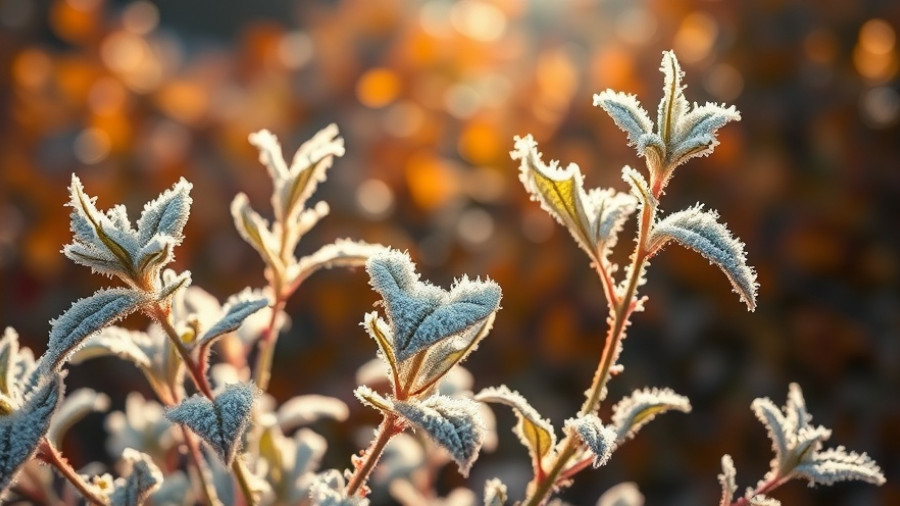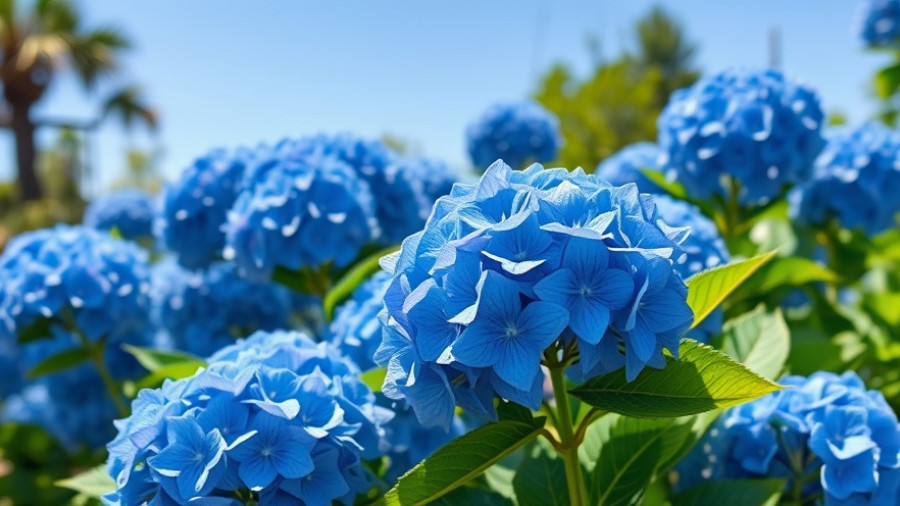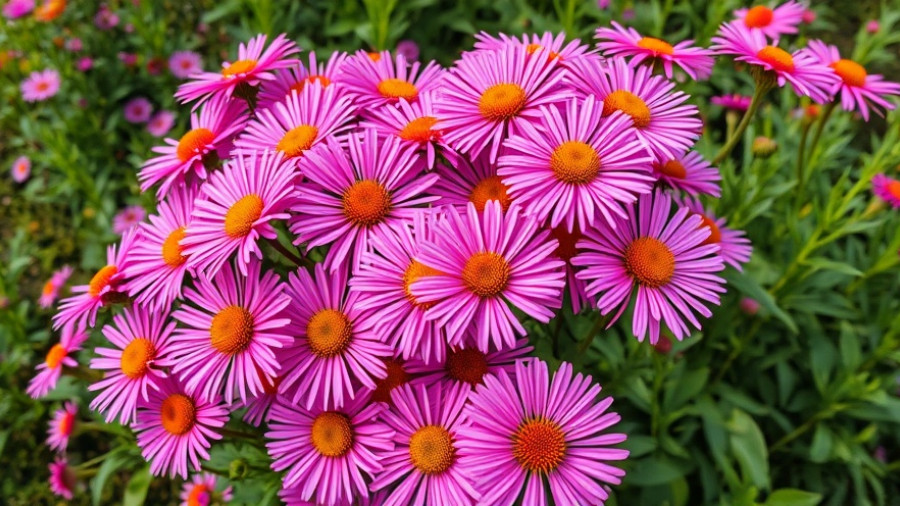
Understanding First Frost and Hard Freeze: The Basics
As winter approaches, knowing the difference between first frost and hard freeze becomes critical for avid gardeners. Both terms sound similar, but each has distinct implications for your garden. A first frost occurs when the air temperature dips below 32°F (0°C), resulting in ice formation on the surface of plants. In contrast, a hard freeze takes place when temperatures plunge to 28°F (-2°C) or lower, often for an extended period, affecting the ground and the various root systems of tender plants.
Why You Should Prepare for Frost
Understanding these weather phenomena is essential for gardeners who want to protect their plants. First frosts are particularly treacherous for frost-tender species like tomatoes, cucumbers, and peppers. An early frost can signal the end of the growing season for many of these plants, and being proactive can save your garden from a sudden demise. By monitoring climate forecasts and understanding your local frost dates, you empower yourself to take timely action, whether that means moving potted plants indoors or covering tender annuals.
Planning for the First Frost: Timing is Everything
For garden planners, knowing your first frost date allows you to schedule endeavors effectively. For instance, in North Florida, the anticipated first frost often occurs around the last week of November. With early preparation, fall planting can include frost-tolerant species like brassicas and roots, assuring you reap the benefits of cooler soil. Planning your harvest before the frost becomes a necessity, protecting your cherished crops from the whims of weather.
Protecting Your Plants from a Hard Freeze: Proactive Strategies
A hard freeze poses even greater risks to your garden. While some hardy crops can withstand light frosts, a hard freeze usually means a more extended period of subzero temperatures. This makes it all the more essential to prepare well. Strategies include mulching around roots to insulate them and removing any spend plants that are unlikely to survive relocating the risk into cleaning out your garden for winter.
Eco-Friendly Yard Care: Preparing for Seasonal Changes
As winter creeps in, consider applying eco-friendly yard care methods to help your garden endure the frigid months. Creating compost from last season's vegetation, integrating natural mulch, and employing environmentally-conscious pest control not only give your garden a fighting chance but also strengthen the soil for upcoming planting seasons. Understanding the impact of frost and freeze can redirect your focus on maintaining healthy soil, leading to more fruitful endeavors in the spring.
Unique Benefits of Knowing Frost Marks
Knowledge gained from understanding first frost and hard freeze dates extends beyond mere survival of plants. It fosters a deeper connection with your garden as you learn to read the weather and adapt your practices. Planting schedules can be harmonized with environmental indicators, leading to richer, more diverse harvests throughout the year. The anticipation of seasonal changes builds excitement and prepares your garden for success.
Conclusion: Take Action For a Thriving Garden
Knowing when to expect your first frost and potential hard freeze is more than just a technicality—it's crucial knowledge that helps shape a thriving garden. With careful planning and timely actions, you can protect your plants and ensure they flourish in the coming seasons. So prepare your gardening gear, harvest what’s left, and stay informed about weather predictions. For tips on backyard transformation or other instructional guides, dive deeper into local gardening resources.
 Add Row
Add Row  Add
Add 




Write A Comment